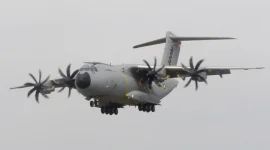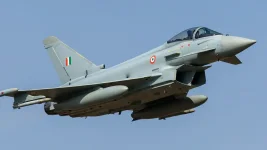- Views: 2K
- Replies: 16
German defence corporation Rheinmetall has proposed its state-of-the-art Skynex air defence system to the Indian Army, which is looking to urgently modernise its capabilities against emerging aerial threats.
The offer comes as India seeks to replace its vintage L-70 and Zu-23mm anti-aircraft guns amid heightened tensions with Pakistan and the increasing use of drones along its borders.
The push for modernisation gained urgency following recent border clashes in May 2025, where Pakistan was said to have deployed swarm drones along the Line of Control (LoC).
This new form of warfare, involving large numbers of coordinated unmanned aerial vehicles (UAVs), has highlighted the need for advanced Short-Range Air Defence (SHORAD) systems to protect critical assets and forward-deployed troops.
Pakistan's collaboration with China and Turkey to improve its drone technology has further emphasised the need for India to upgrade its aerial defence grid.
The Skynex system is built around the Oerlikon 35mm Revolver Gun Mk3, a weapon capable of firing 1,000 rounds per minute at targets up to five kilometres away.
Its key advantage lies in its use of specialised AHEAD (Advanced Hit Efficiency and Destruction) ammunition. Each programmable round releases a cone-shaped cloud of tungsten projectiles just ahead of a target, creating a lethal screen that is highly effective at neutralising small and fast-moving threats like drones, cruise missiles, and low-flying aircraft.
A significant feature of the Skynex is its modular design, allowing for flexible deployment and integration. The system's open architecture means it can be connected to various sensors, including the Oerlikon X-TAR3D radar, which has a detection range of 50 kilometres.
This adaptability also allows it to be combined with existing Rheinmetall systems and potentially integrate future technologies like high-energy lasers, making it a forward-looking solution for India's layered air defence strategy.
The Skynex system has already demonstrated its effectiveness in active combat zones. It has been successfully deployed by Ukrainian forces to counter Russian drone attacks, including neutralising the Iranian-made Shahed-136 loitering munitions.
This proven battlefield performance against drone swarms is particularly relevant for the Indian Army, which reported successfully intercepting over 500 such drones during the recent border escalations.
Currently, the Indian Army's air defence relies on systems like the Swedish-designed L-70 40mm guns and the Soviet-era Zu-23mm twin-barrel cannons.
While these legacy platforms have been upgraded over the years with modern electro-optical fire control systems, their fundamental design is considered less effective against the complex challenges posed by modern drone warfare and precision-guided munitions.
However, the potential acquisition of the Skynex system presents several challenges for India.
The system is known to be one of the most expensive SHORAD solutions on the market, and its high cost could place a strain on the defence budget, which must also fund other high-priority projects like the indigenous AMCA fighter jet and the Multi-Role Fighter Aircraft (MRFA) acquisition.
Furthermore, any procurement would need to align with India's "Aatmanirbhar Bharat" policy, likely requiring complex negotiations regarding technology transfer and domestic manufacturing to ensure the foreign system can be seamlessly integrated into India's existing defence infrastructure.





